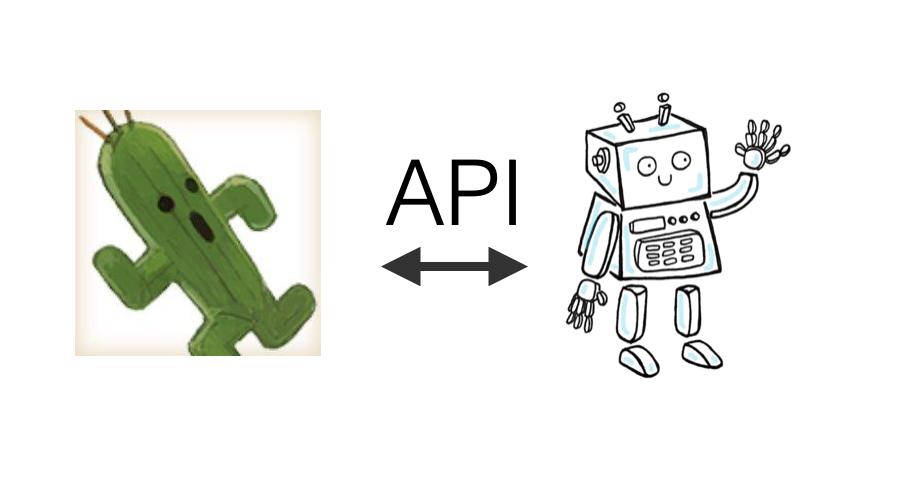
In this example, we use the great json-server from Typicode to demonstrate the API testing functionality of Boozang.
Start by setting up an mock API by following the instructions here: https://github.com/typicode/json-server.
In brief, make sure to install NodeJS and use npm to install json-server globally.
npm install -g json-serverCreate an empty data file “db.json” containing some JSON data i.e.
{
"posts": [
{ "id": 1, "title": "json-server", "author": "typicode" }
],
"comments": [
{ "id": 1, "body": "some comment", "postId": 1 }
],
"profile": { "name": "typicode" }
}
and start the mock API server locally
json-server --watch db.json
The server will be started on “http://localhost:3000”
Now, go to “https://ai.boozang.com” (or https://eu.boozang.com” for Europe / Asia) and create a Boozang project called “API example” and add “http://localhost:3000” as application URL.
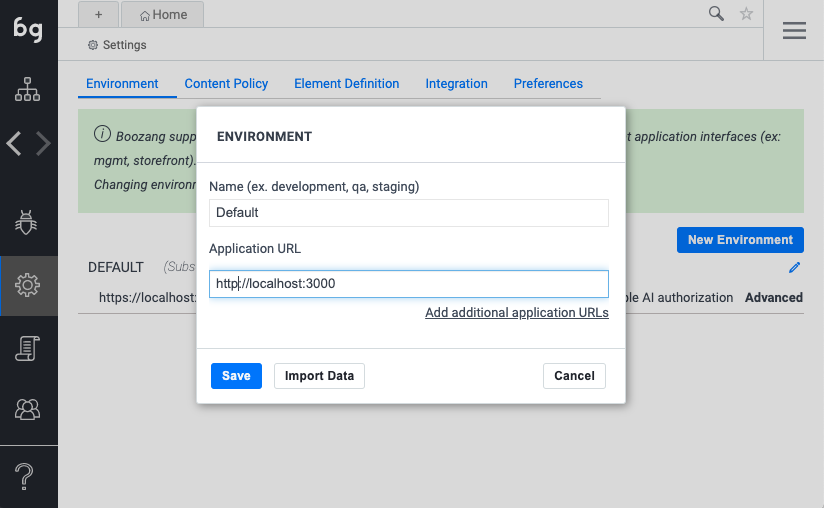
Now to get started we want to create the module “Posts” and create the following API tests
We will later tie them together using a Cucumber test.
Here is a brief overview of the API tests and things to keep in mind.
Simple validation that check if blog is up and running
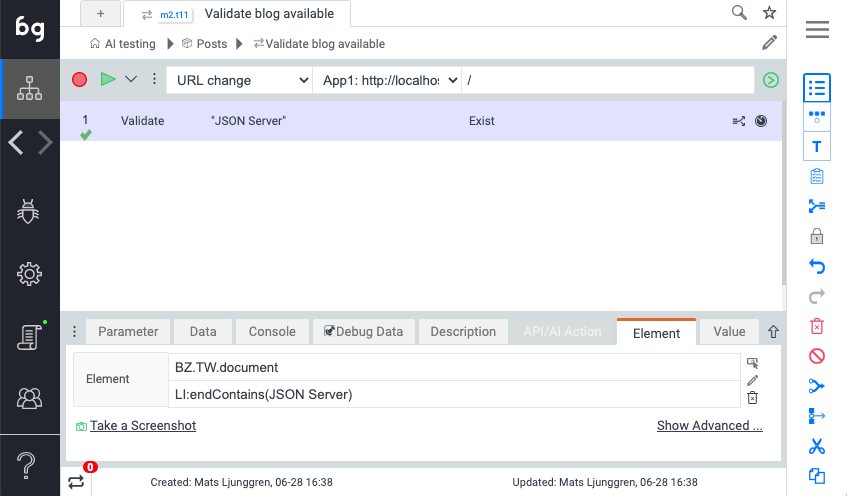
Adds a post using the REST API. Here we use the parameter
{
"author": "Mats Ljunggren",
"title": "A banana must rest"
}
Note: Remember to send this in the body of the POST request.
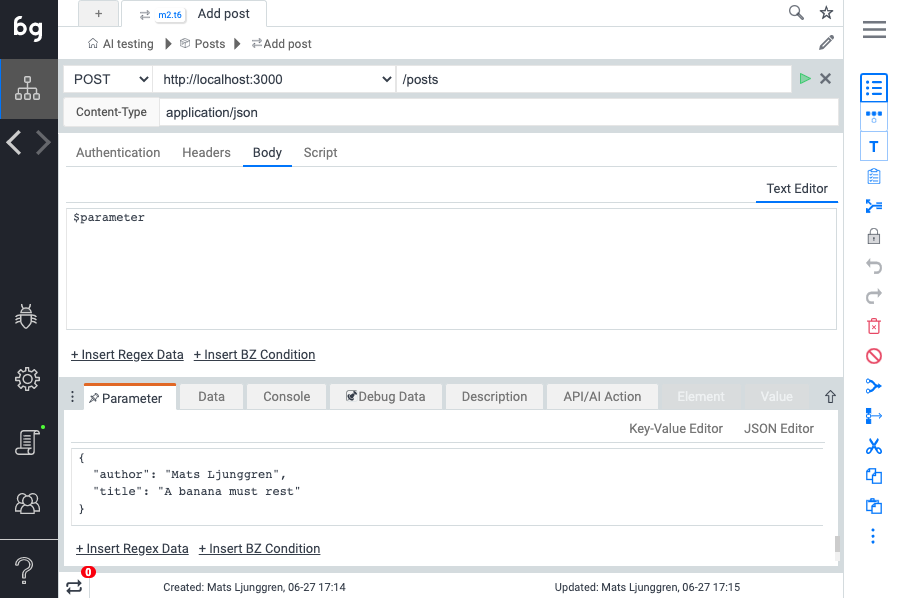
Here we also use the parameter, but in this case we use a GET request to fetch the post and the script section to validate the post content
{
"author": "Mats Ljunggren",
"title": "A banana must rest"
}
Note how we use the parameter in the URL, and also in the validation section
vr = v[0].title===$parameter.title && v[0].author===$parameter.author;
We also save the post ID as project-level data
$project.currentId = v[0].id;
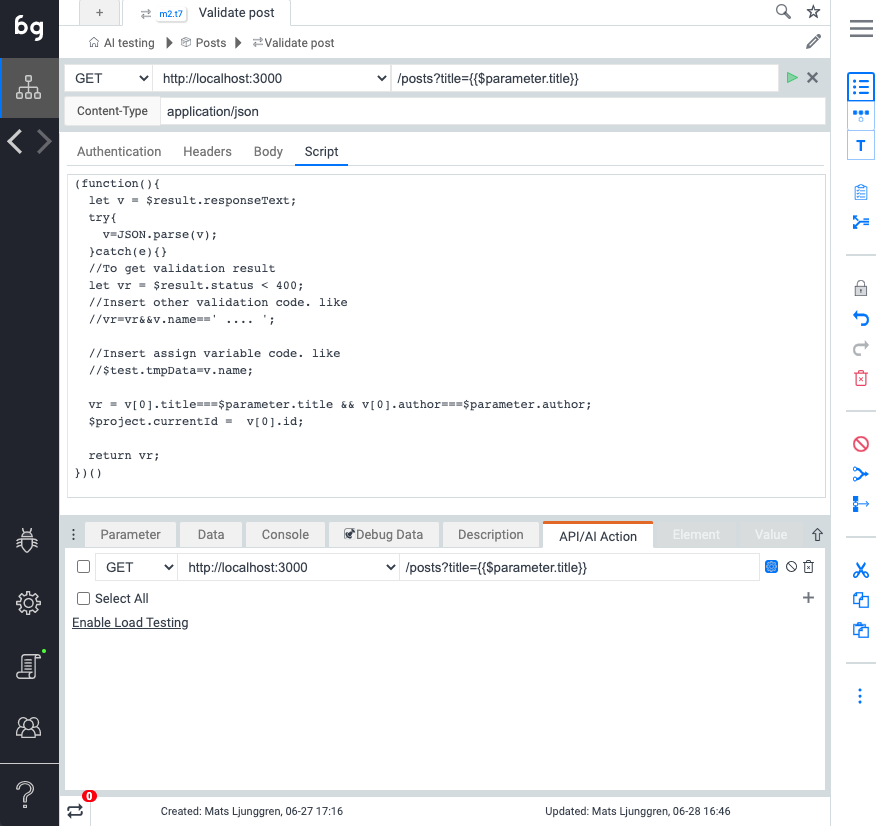
The delete post simply uses the post id that was saved previously and deletes it using the DELETE operation.
Note: As you can see I add a validation to make sure $project.currentId is set.
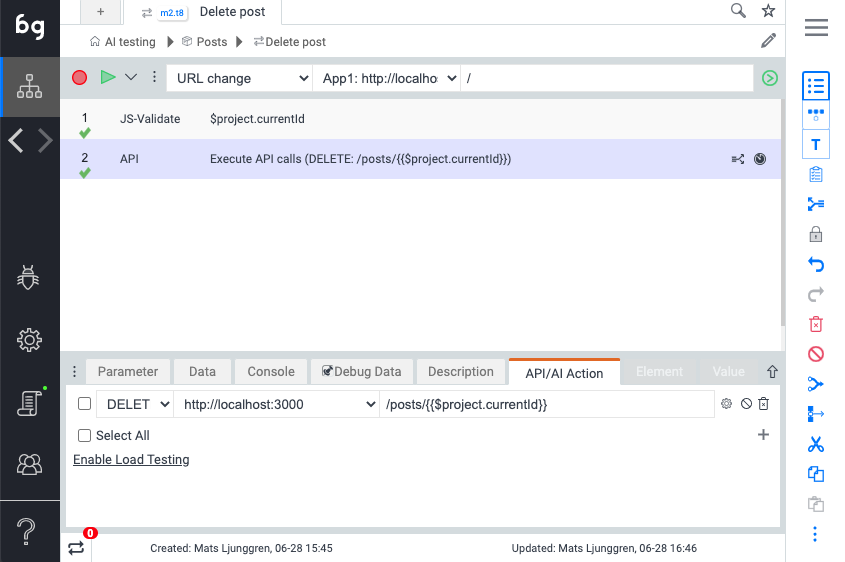
A simple validation that the post is no longer there. As you can see from the validation section I make sure a status code 404 are being returned.
let vr = $result.status == 404;
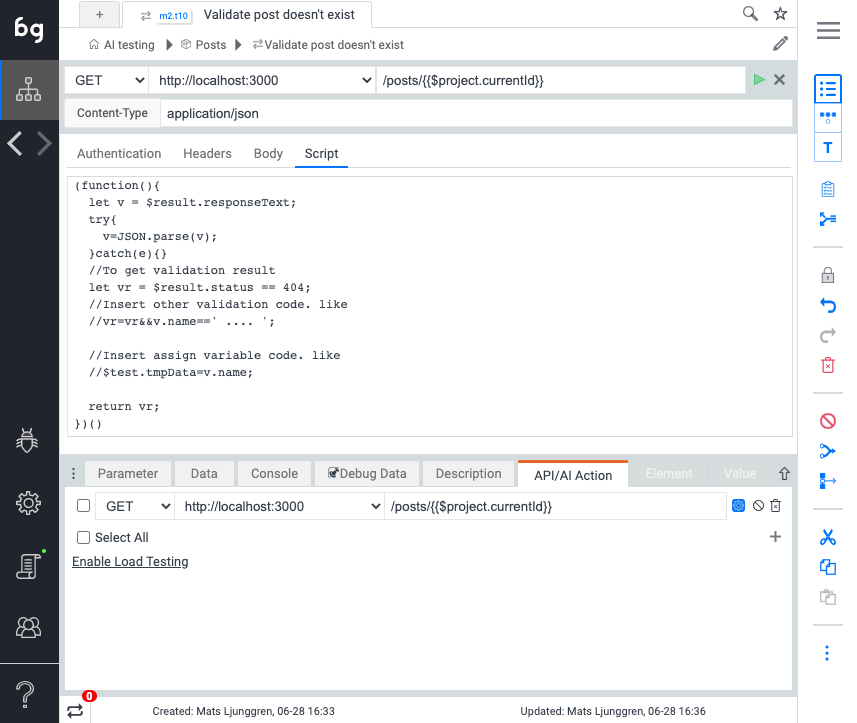
Now it’s time to tie it all together using a Cucumber test. By going to the Features tab from the root, I create the following feature “Posts Management”, where I create the following scenario
Scenario Outline: Add and delete Given I have a blog with posts When I add a post with <title> and <author> Then the post with <author> and <title> should exist When I delete the post with <author> and <title> Then the post with <author> and <title> should not exist Examples: |author|title| |Mats Ljunggren|Some title| |Wensheng Li|Some other title|
This looks the following way in Boozang
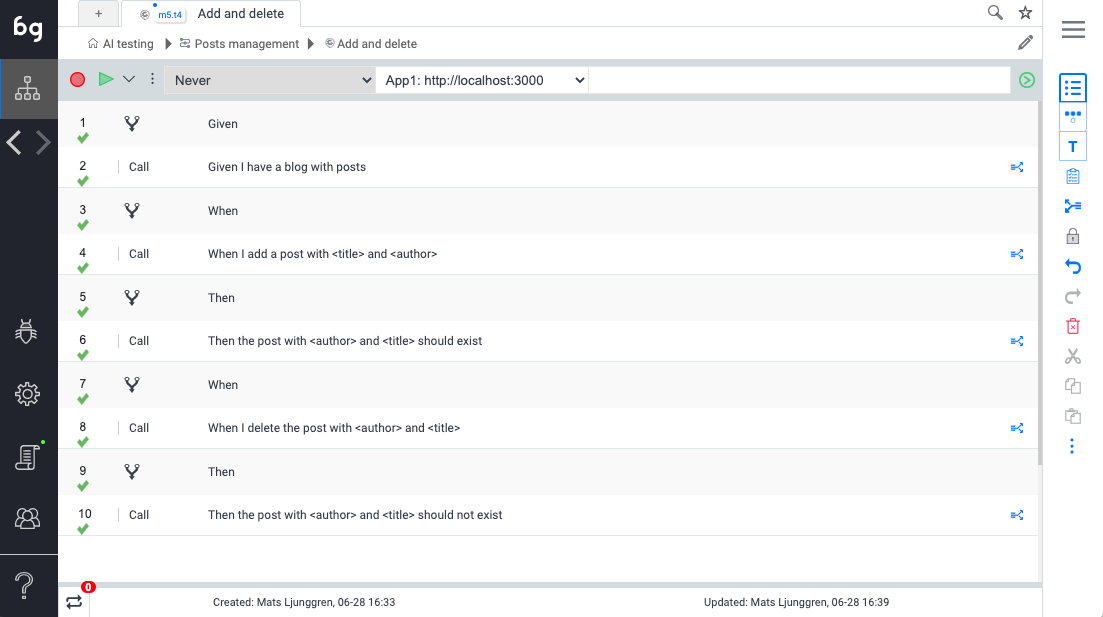
After linking all the tests appropriately the test map looks as follows:

This was a very brief overview that only scratches the surface of what can be done in Boozang for API testing. For instance, this did not cover the following capabilities:
We will try to cover these topics more substantially at some point in the near future. Let us know if you have any comments or suggestions!
Codeless testing that works. No credit card or commitment required.